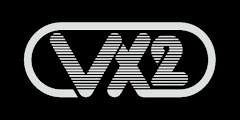 |
| Pink noise, delicious. |
I wanna get into it, man:
The Cover
- Steven De Waele turned in an illustration that I think does a good job of showing off the unusual types of characters players can create and play in GRIDSHOCK. The idea for the scene was a diverse group of Vector heroes watching as a psychic Free Agent telekinetically lifts a truck motor aloft. A truxorcist performs a mystical ritual, perhaps protecting it from daemonic possession. What's important is that I think the illustration is interesting to look at on its own. I think it gets across that trucking is important in the game, and that there are lots of interesting character options.
Power Sources and Vector Templates
- I spent a page discussing where the different Vector (player character) types get their powers from, and why that's important. This may be a little over-exacting, but my hope was that it would help give players an idea of how their character fits into the world. There are a lot of things like that in the zines; whether they accomplish that goal is a good question. Some probably help, others might just make things more complicated than necessary.
- The bulk of the rest of Zine 2 consists of the twelve customizable Vector templates that GRIDSHOCK players use to create characters. Each has a two-page spread with an illustration taking up nearly half of it, and each has its own unique layout style. Steven did a great job with the art for each one -- he pulled off an impressive blend of American, European, and Japanese art styles that works really well for the subject matter, and each character has a lot of personality. I'm also glad that I gave Chris the chance to play around with layout and typefaces here. I might have him dial it down a little next time, since a couple of them are less clear as a result. (I think Chris agrees with this assessment.) Giving each template's name its own "logo" is fitting, I think, and I'd probably keep that.
- Although it might look intimidating to newcomers, I think giving three examples of how each template can be customized is a good idea, considering how much impact power selection has on creating characters. I think it's also useful for players who might be looking to play a specific type of character and don't want to do it from scratch.
- Next time, I might cut two or four templates from the initial range of options. Eight or ten would still be enough to choose from, I think -- again, choice of powers can completely change how a character plays and that provides a lot of customization.
Threats and Menaces
- This tries to boil two of the GRIDSHOCK setting's major adversaries -- daemons and Exhumans -- down to a couple of pages. It works, technically speaking, but it's a stopgap measure. It would be much better to provide at least as much detail on each of them as the Vector templates got, but space didn't allow for it. Ideally, each one would have had more flavor text, as well as suggestions on how the GM should use the powers I listed for them. Something to correct next time.
Next time, I'll dissect Zine 3: Regions, maybe the most ambitious one of the four.



